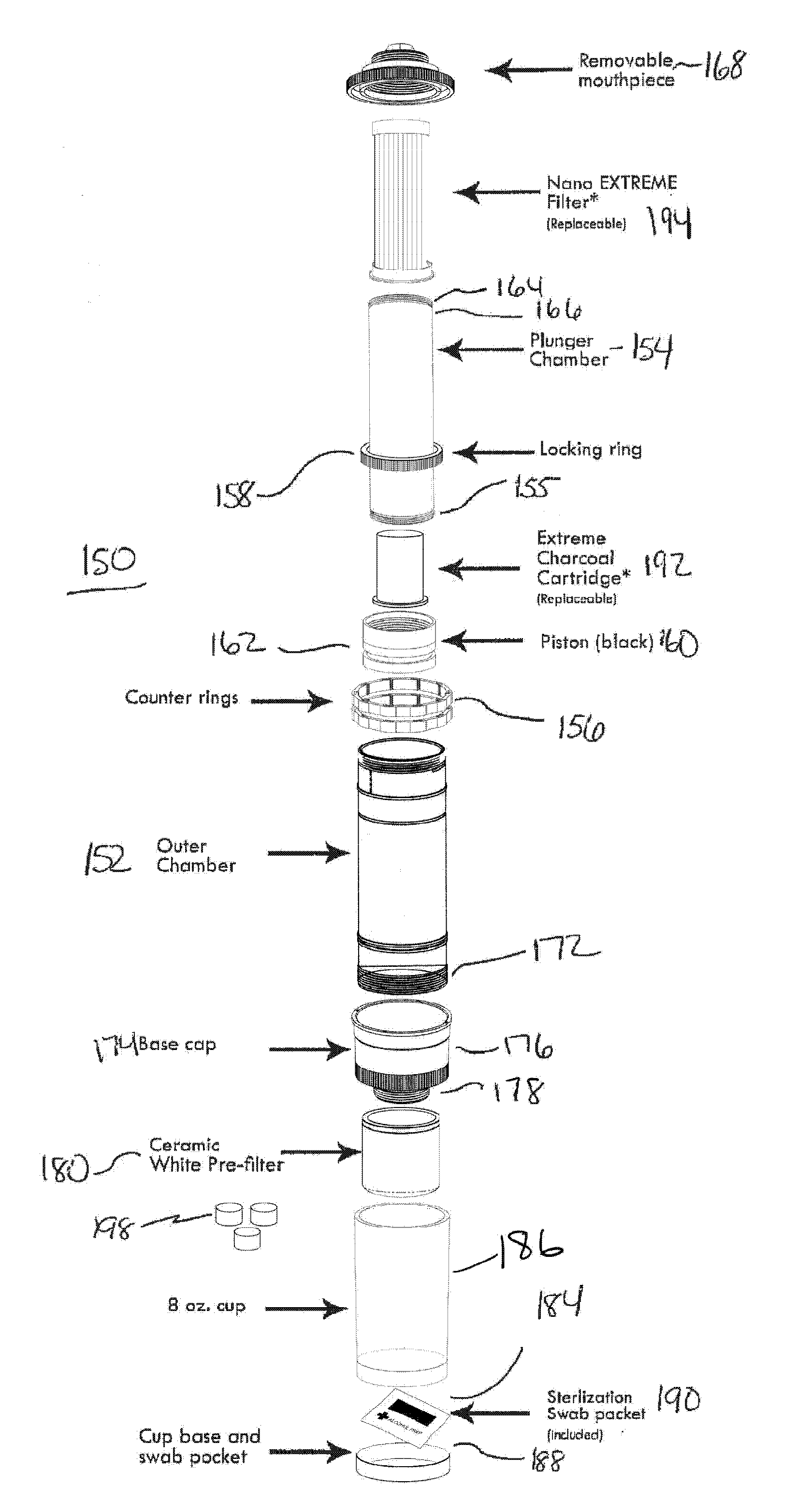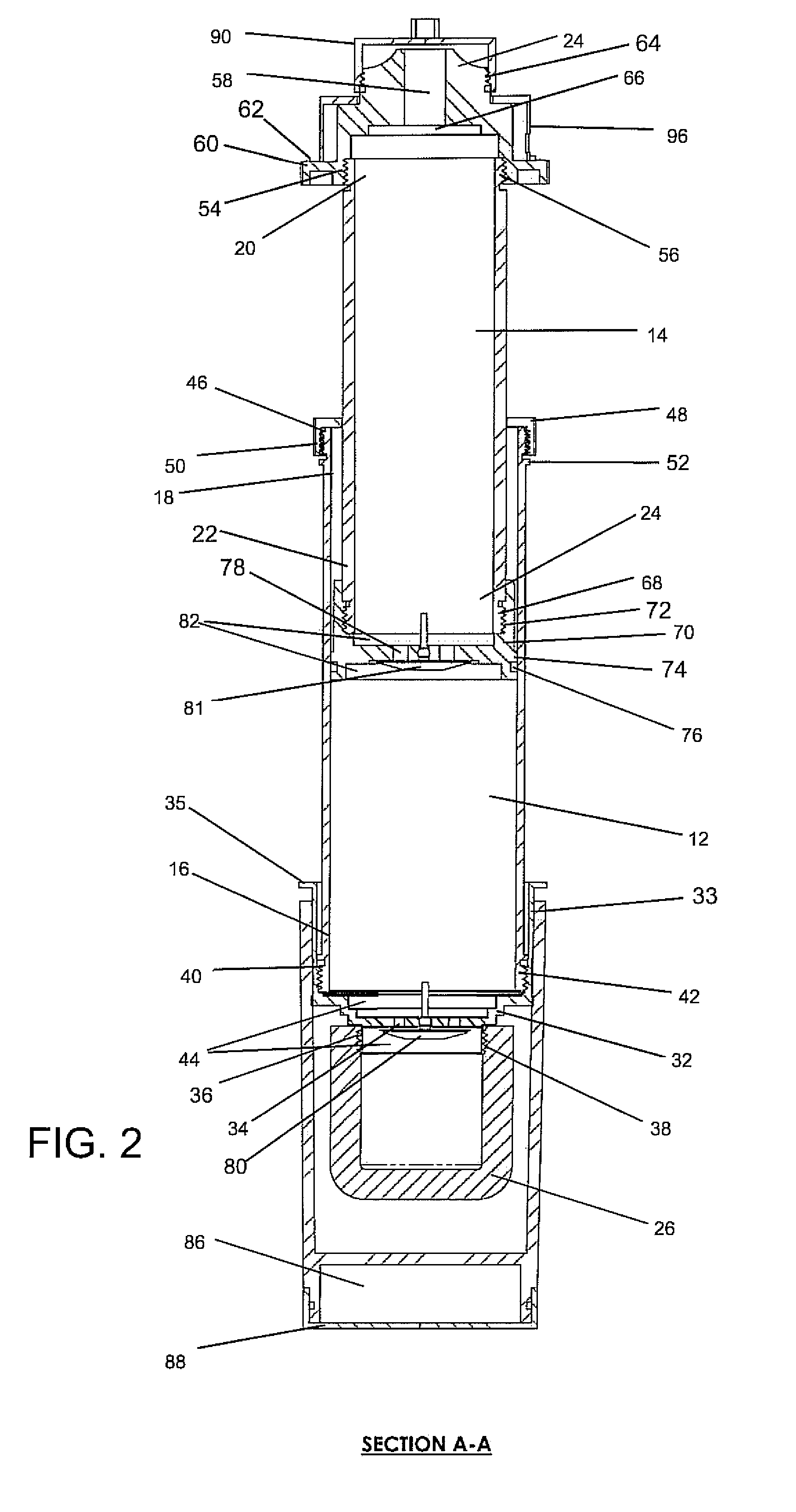Portable Drinking Water Purification Device
a purification device and portable technology, applied in water/sewage multi-stage treatment, other chemical processes, separation processes, etc., can solve the problems of contaminated drinking water, leading causes of health problems, and ensuring the safety of a supply of water in developed countries, and achieve the effect of extending the life of the pre-filter and small pore siz
- Summary
- Abstract
- Description
- Claims
- Application Information
AI Technical Summary
Benefits of technology
Problems solved by technology
Method used
Image
Examples
Embodiment Construction
[0034]The following detailed description is of the best mode or modes of the invention presently contemplated. Such description is not intended to be understood in a limiting sense, but to be an example of the invention presented solely for illustration thereof, and by reference to which in connection with the following description and the accompanying drawings one skilled in the art may be advised of the advantages and construction of the invention.
[0035]The present invention is directed to a portable water disinfecting and purifying device capable of isolating an amount of water in a cavity in the pre-filter prior to entering into the device or in a first holding chamber where the water is treated with the appropriate disinfectant, and then is passed into a second chamber where it is further filtered and dispensed for drinking or any other desired activity. The second or inner chamber is telescoping with respect to the first holding or outer chamber, and with the distal end of the...
PUM
| Property | Measurement | Unit |
|---|---|---|
| Fraction | aaaaa | aaaaa |
| Pore size | aaaaa | aaaaa |
| Pore size | aaaaa | aaaaa |
Abstract
Description
Claims
Application Information
 Login to View More
Login to View More - R&D
- Intellectual Property
- Life Sciences
- Materials
- Tech Scout
- Unparalleled Data Quality
- Higher Quality Content
- 60% Fewer Hallucinations
Browse by: Latest US Patents, China's latest patents, Technical Efficacy Thesaurus, Application Domain, Technology Topic, Popular Technical Reports.
© 2025 PatSnap. All rights reserved.Legal|Privacy policy|Modern Slavery Act Transparency Statement|Sitemap|About US| Contact US: help@patsnap.com



